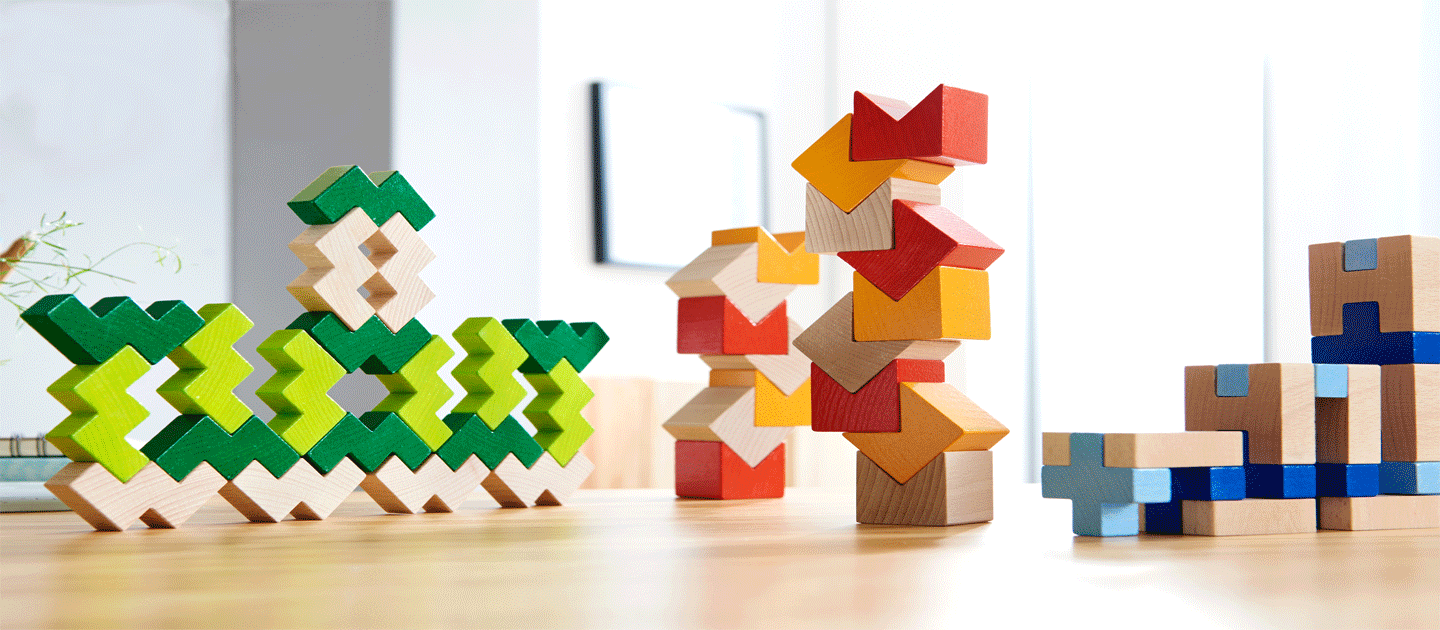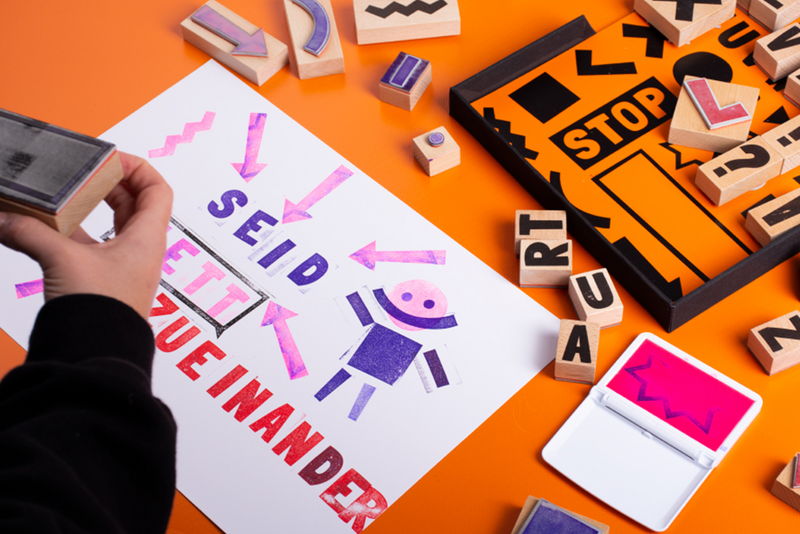
The Bauhaus – a role model for toy design?
By Ulrich Texter
Is the Bauhaus once again the benchmark for design 100 years after it was first founded? Quite a few people regard the Bauhaus as the forerunner of current design developments, which are now called Design Thinking or Social Design. And in its anniversary year in particular, the icons of the past are currently experiencing a revival, as the furniture fairs demonstrate. But what influence does the "Cradle of the Modern" that was a foundry for the elite who were responsible for modern-day design have on today's toy designers, who often have to sail in the wake of their big brothers?
Toy design is rarely in the public limelight. Exceptions prove the rule here, too, though. In the 1990s, BIG made headlines with outstanding designers and artists such as Otmar Alt, Philipp Starck ("The Face") and Kitty Kahane. The trio created unique rolling pieces of art and design, which were enthusiastically received by a public press that otherwise considers "form follows function" to be a Euclidean doctrine. The rather shabby treatment of the topic in the industry itself as well as in the media changed little – until today, as designer Alex Hochstrasser, Moluk GmbH, believes. He is among other things the creator of Bilibo, an "over-large salad bowl", in other words a multi-functional toy for open-ended play that was on display in New York's MoMa a few years ago.
Bauhaus Manifesto 4.0

Is the question of the way the Bauhaus influences today's toy design thus obsolete? Not in Hochstrasser's view. "The Bauhaus is not necessarily present in my daily working life," he says, "but it does provide the foundation for good design and is still a relevant reference point. The Bauhaus is the pioneer of modern design, and this was continued with the Ulm College of Design, which, however, was very rigidly functionalist and excluded almost everything that was playful." With his designs, Hochstrasser wishes to combine the idea of the Bauhaus – namely that of "designing meaningful, practical and affordable products" – with his idea of what constitutes play.
It is, above all, art which played a far greater role in the early years of the Bauhaus than in its final phase, when architecture shaped the syllabus, that is an important source of inspiration for him. Hochstrasser is convinced that: "At the end, the Bauhaus was just focused on functionality, but humour and irony have to be incorporated into design today in order to tell a narrative. A product with no soul appeals to no-one." Nevertheless, Moluk's claims could well serve as a manifesto for Bauhaus 4.0: "At Moluk, we design universal, multifunctional and very purist toys that are not limited to any age group; they remain relevant for a long period of time and aren't gender-specific." Above all, the "less is more" idea of handling resources responsibly and, at the same time, creating maximum benefits is more relevant now than ever before.
Toy design – just kid's stuff?
The demands sound similarly ambitious and are just as much influenced by the Bauhaus as those demands that designers place on classic product design. And yet toy design is still only the unremarkable little sister of the big brothers of interior, furniture or car design. Only in 2014 was the "Baby and child" category included in the competition for one of the world's most sought-after quality seals of approval for design: the Red Dot Design Award. The global design label iF offers "Outdoor, Sports & Leisure" as a category, in which, as early as 1969, the wooden toy "Schnurri" received an award. In the past 50 years, the award has been won by 130 "toys". The Wonderland Design Prize for innovative baby products, a competition for bright young talent, is being held for the first time ever in 2019. All this suggests that toy design has long been regarded as "kid's stuff" rather than a category that should actually be taken seriously. Anyone wishing to enter the Hall of Fame as a designer preferred to create a chair than a teething ring, while the toy manufacturers of the past thought primarily in terms of economics rather than aesthetics.
Toy design in a quandary

Furthermore, toy design often faces the dilemma of designing a product with a built-in expiry date that should nevertheless become a design classic. Take one example: in 2018, the toy manufacturer Naef's grabbing toy "Sola" won the gold medal for "Outstanding and Forward-Looking Design" in the "Kids and Family" category at the Focus Open competition staged by the International Design Center Baden Würtemberg. As is the nature of such things, "Sola" will be played with by the target group for just a short space of time, only to be soon discarded as some well-worn artefact. Such a life cycle is short and sweet – unlike a "Wishbone Chair", an "Egg Chair" or the tubular steel cantilever chair of the Bauhaus disciple Marcel Breuer. They accompany the owners for a lifetime, are part of their everyday life, prestigious symbols and identity anchors.
Heiko Hillig, chief designer of Swiss toy manufacturer Naef, has designed the grabbing toy, which stimulates babies through its feel, shape, colour and acoustics. It's not just with regard to what design has to accomplish that he upholds the tradition of the Bauhaus. He also shares its early sociopolitical views. "I believe," says Hillig, "that as designers, we bear a certain responsibility and have to make the world a better place." He regards the award and the great international demand for Naef toys as an endorsement of an attitude that consistently focuses on quality, an attitude that is appreciated worldwide. For example, the "Bauhaus Building Game" that the Swiss produced on the special anniversary of the Bauhaus has long been sold out. Hillig is already working on a new series called "Basic". The purist style, the pursuit of perfection and the will to design pure form, all of which is what the Bauhaus represents, lives on in Zofingen. "The Bauhaus," says Heiko Hillig, "has only really arrived today."
About the author
Ulrich Texter made writing his profession after studying psychology and philosophy at the FU Berlin. He has a preference for literature, jazz music and design. For more than 20 years, he has accompanied the toy industry as editor-in-chief of the trade magazine planet toys. You can sense his penchant for design when he looks at small gems of the toy industry. True to the motto "We can also do things differently", he creates small cultural oases in Bad Iburg as an honorary cultural impresario with the Ostenfelder Leseherbst and the children's literature prize "Schlossgeschichten".




![[Translate to Englisch:] [Translate to Englisch:]](/fileadmin/_processed_/0/a/csm_20232510_Bauhaus_Teaser_82f286fdca.jpg)